Plotting tool for evolutionary population dynamics. Creates a Fish (Muller) plot.
Project description
PyFish
PyFish is a Python 3 package for creation of Fish (Muller) plots like the one below.
Primary features
- polynomial interpolation
- curve smoothing
- high performance
- works with low and high density data
PyFish can be used either as a stand-alone tool or as a plotting library.
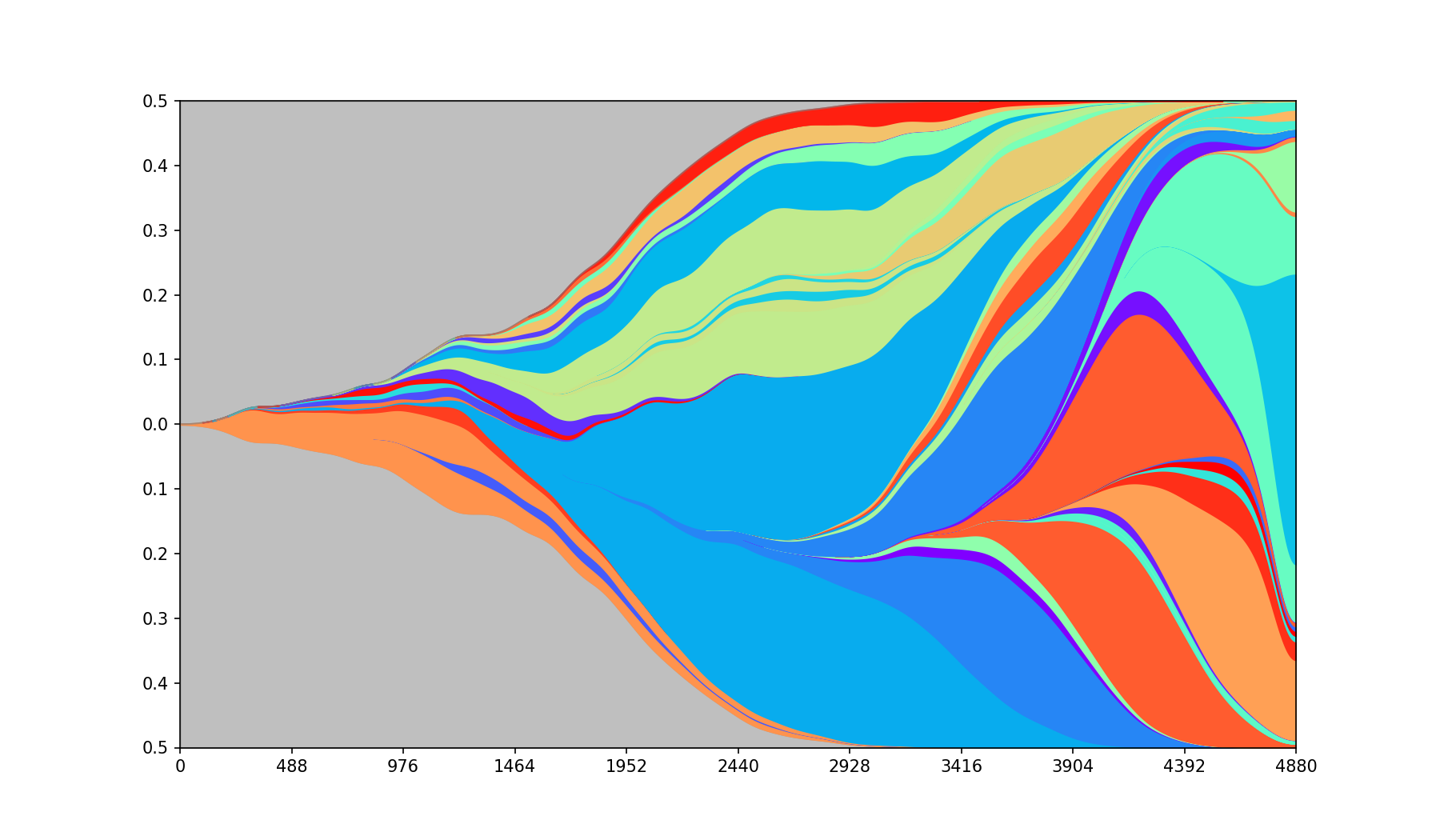
Installation
PyFish requires Python >= 3.8
The package can be installed using Conda (from the bioconda channel)
conda install -c bioconda pyfish
or Pip
pip install pyfish.
Input
The program takes two tables:
- one describing the size of individual subgroups at given points in time, referred to as populations,
- one describing the parent-child relationships between the subgroups, referred to as parent tree.
Populations
Populations table has the schema (Id: +int, Step: +int, Pop: +int), where:
Idis a numerical identifier of a subgroup`,Stepis a natural ordinal describing the logical time when the population is measured,Popis the size of the population of the subgroup at the given step.
An example populations table:
| Id | Step | Pop |
|---|---|---|
| 0 | 0 | 100 |
| 0 | 1 | 40 |
| 0 | 2 | 20 |
| 0 | 3 | 0 |
| 1 | 0 | 10 |
| 1 | 3 | 50 |
| 1 | 5 | 100 |
| 2 | 4 | 20 |
| 2 | 5 | 50 |
| 3 | 0 | 10 |
| 3 | 1 | 20 |
| 3 | 5 | 10 |
Parent Tree
Parent tree has the schema (ParentId: +int, ChildId: +int), where:
ParentIdis an id matching the population table,ChildIdis an id matching the population table describing the direct progeny of the parent.
An example parent tree:
| ParentId | ChildId |
|---|---|
| 0 | 1 |
| 1 | 2 |
| 0 | 3 |
Note: there must be exactly one node in the parent tree that has no parent. This is the root (0 in the example above).
Tool
We provide example data. From the root folder of the project call:
pyfish tests/populations.csv tests/parent_tree.csv out.png
This will create a plot called out.png in the folder.
Additional execution parameters are described below.
Library
The populations and parent_tree tables can be constructed directly as dataframes.
The library contains three public functions:
process_dataTakes the input data and parameters and creates data suitable for plotting. Additional arguments match the parameters as described below.setup_figureResizes the figure and adds labels for axes.fish_plotCalls the plotting function on the input parameters.
Example:
import matplotlib.pyplot as plt
import numpy as np
import pandas as pd
from pyfish import fish_plot, process_data, setup_figure
populations = np.array([[0, 0, 100], [0, 1, 40], [0, 2, 20], [0, 3, 0], [1, 0, 10], [1, 3, 50],
[1, 5, 100], [2, 4, 20], [2, 5, 50], [3, 0, 10], [3, 1, 20], [3, 5, 10]])
parent_tree = np.array([[0, 1], [1, 2], [0, 3]])
populations_df = pd.DataFrame(populations, columns=["Id", "Step", "Pop"])
parent_tree_df = pd.DataFrame(parent_tree, columns=["ParentId", "ChildId"])
data = process_data(populations_df, parent_tree_df)
setup_figure()
fish_plot(*data)
plt.show()
Calling the above code displays the following image:
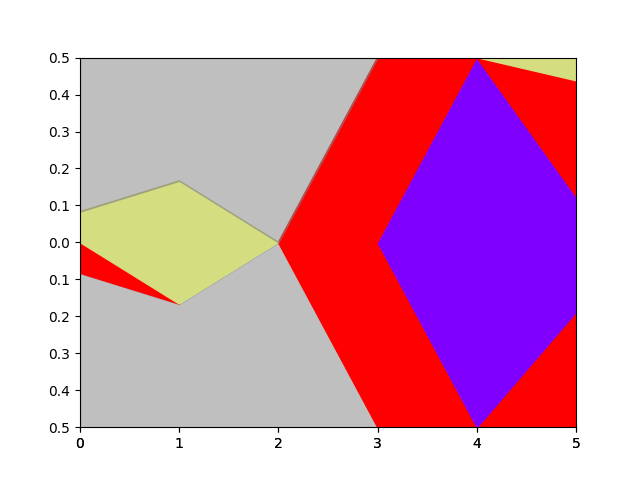
Parameters
-a, --absolute
Plots absolute population counts at each step.
| Base | --absolute |
|---|---|
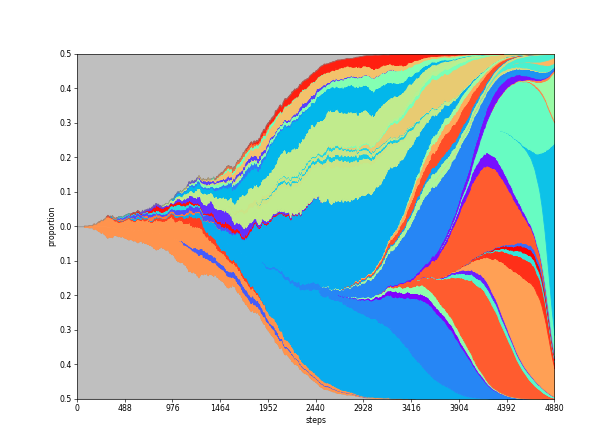 |
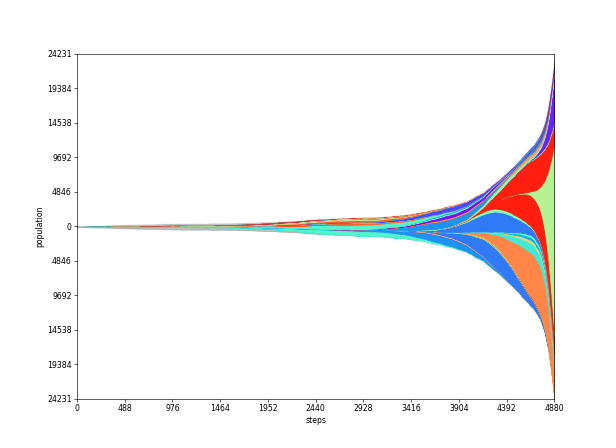 |
-I, --interpolate int
Fills in missing values by interpolation by a polynomial of the given degree. If a value is not given, each population is set to 0 at the first and last step.
| Base | --interpolate 2 |
|---|---|
 |
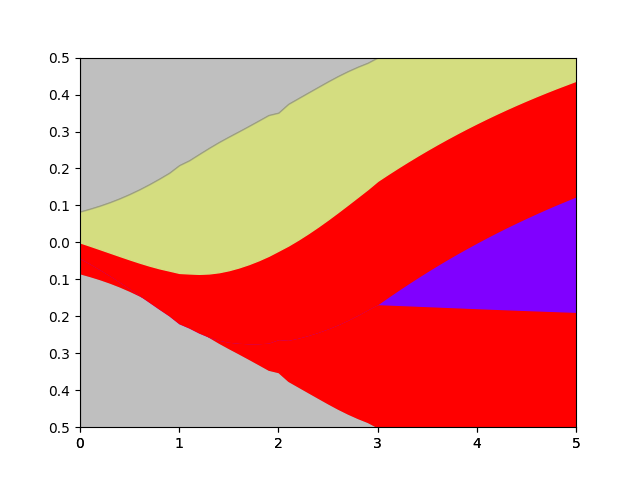 |
-S, --smooth float
Smoothing of the graph using Gaussian filter. The parameter value is the standard deviation of the kernel. The bigger the population the bigger the value should be.
NOTE: If the population values are sparse, using smoothing without interpolation might lead to misleading population sizes.
| Base | --smooth 50 |
|---|---|
 |
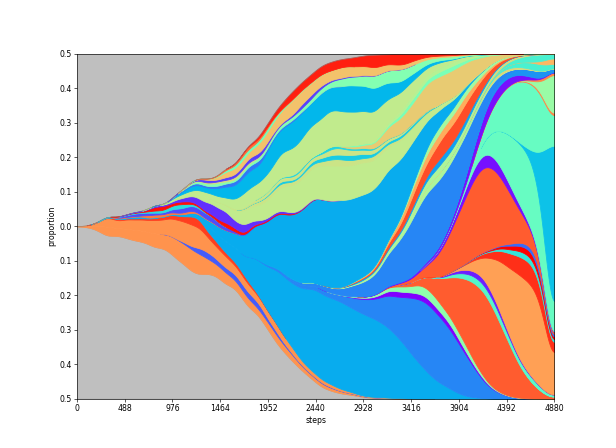 |
-F, --first int+, -L, --last int+
Only limits the steps to the range [first, last] inclusive.
| Base | --first 4000 --last 4500 |
|---|---|
 |
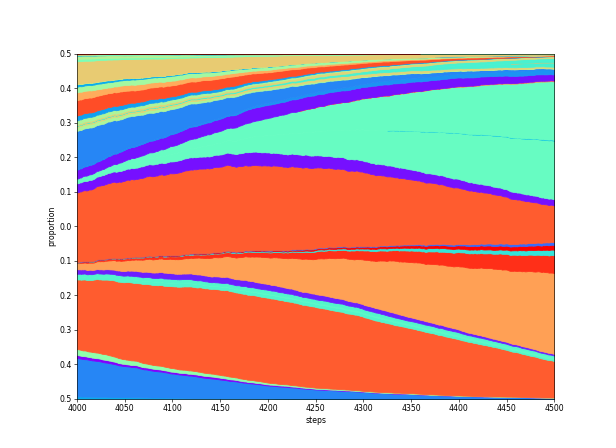 |
-M, --cmap string
Use the specified matplotlib colormap.
Default colormap is rainbow.
| Base | --cmap viridis |
|---|---|
 |
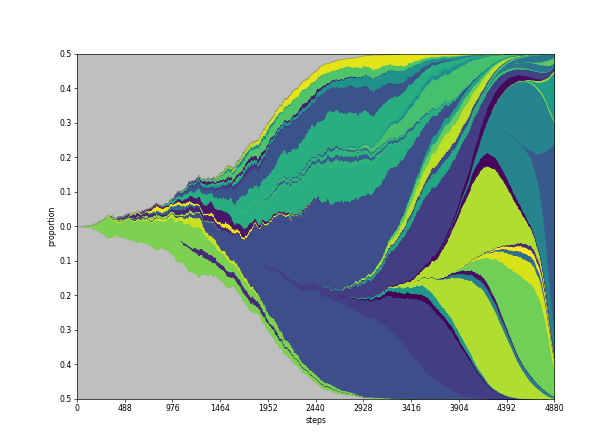 |
-C, --color_by string
Color the ids based on a separate column in the populations.csv file. It will select the first value of the column per id, so the value should be constant for all entries with the same id.
Best combined with a sequential colormap using --cmap
| Base | --color-by Feature --cmap viridis |
|---|---|
 |
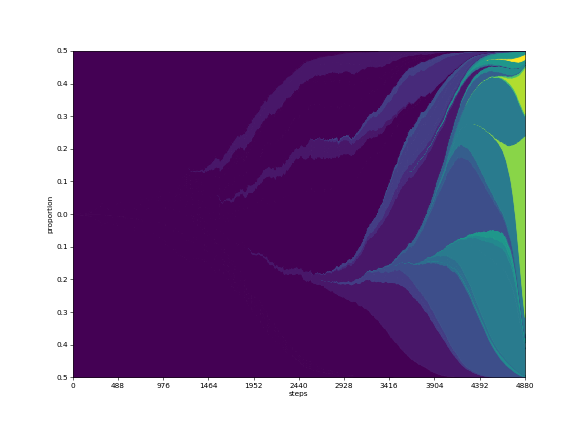 |
-R, --seed int+
Specifies the seed for the randomization of colors.
| Base | --seed 2022 |
|---|---|
 |
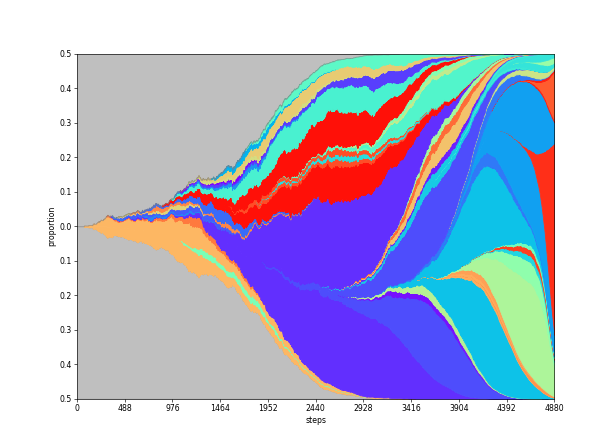 |
-W, --width int+, -H, --height int+
Specifies the dimensions for the output image. The size is including the axes' labels.
Contact
Email questions, feature requests and bug reports to Adam Streck, adam.streck@mdc-berlin.de.
License
PyFish is available under the MIT License.
Project details
Download files
Download the file for your platform. If you're not sure which to choose, learn more about installing packages.














